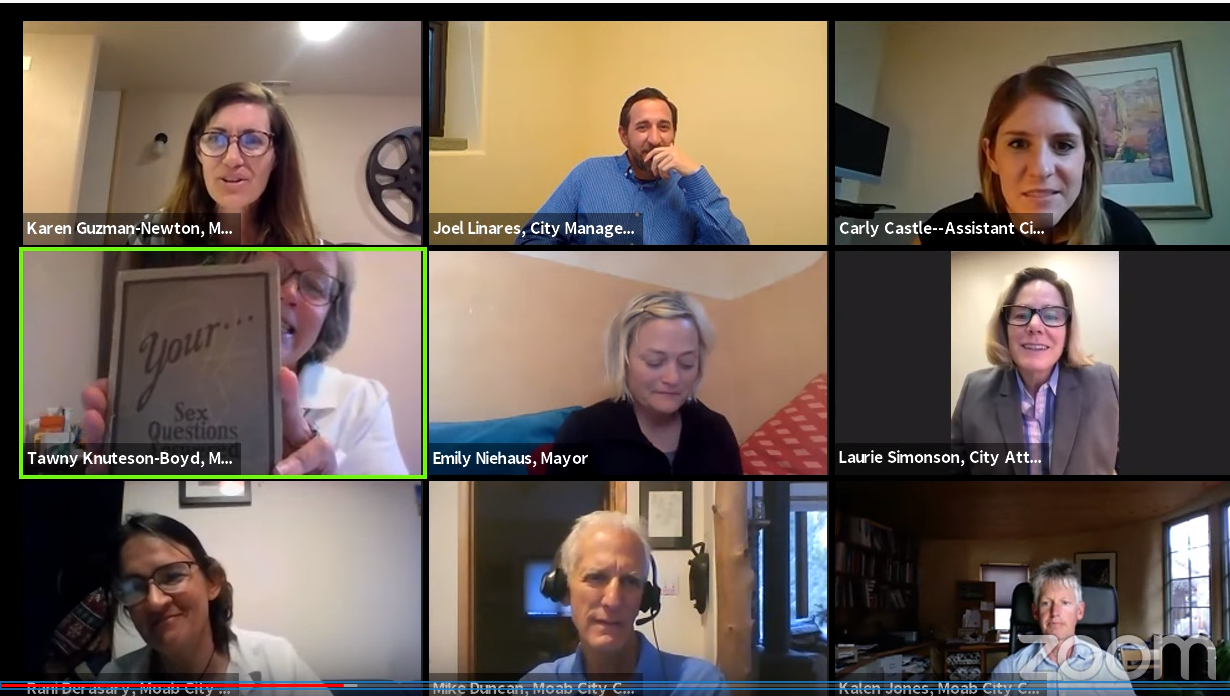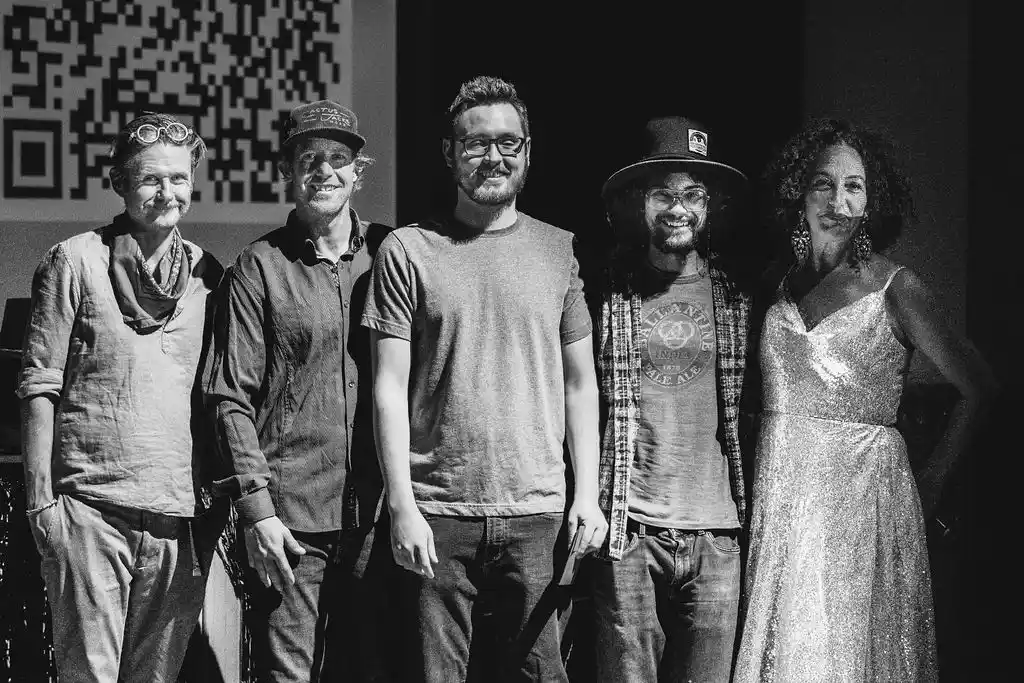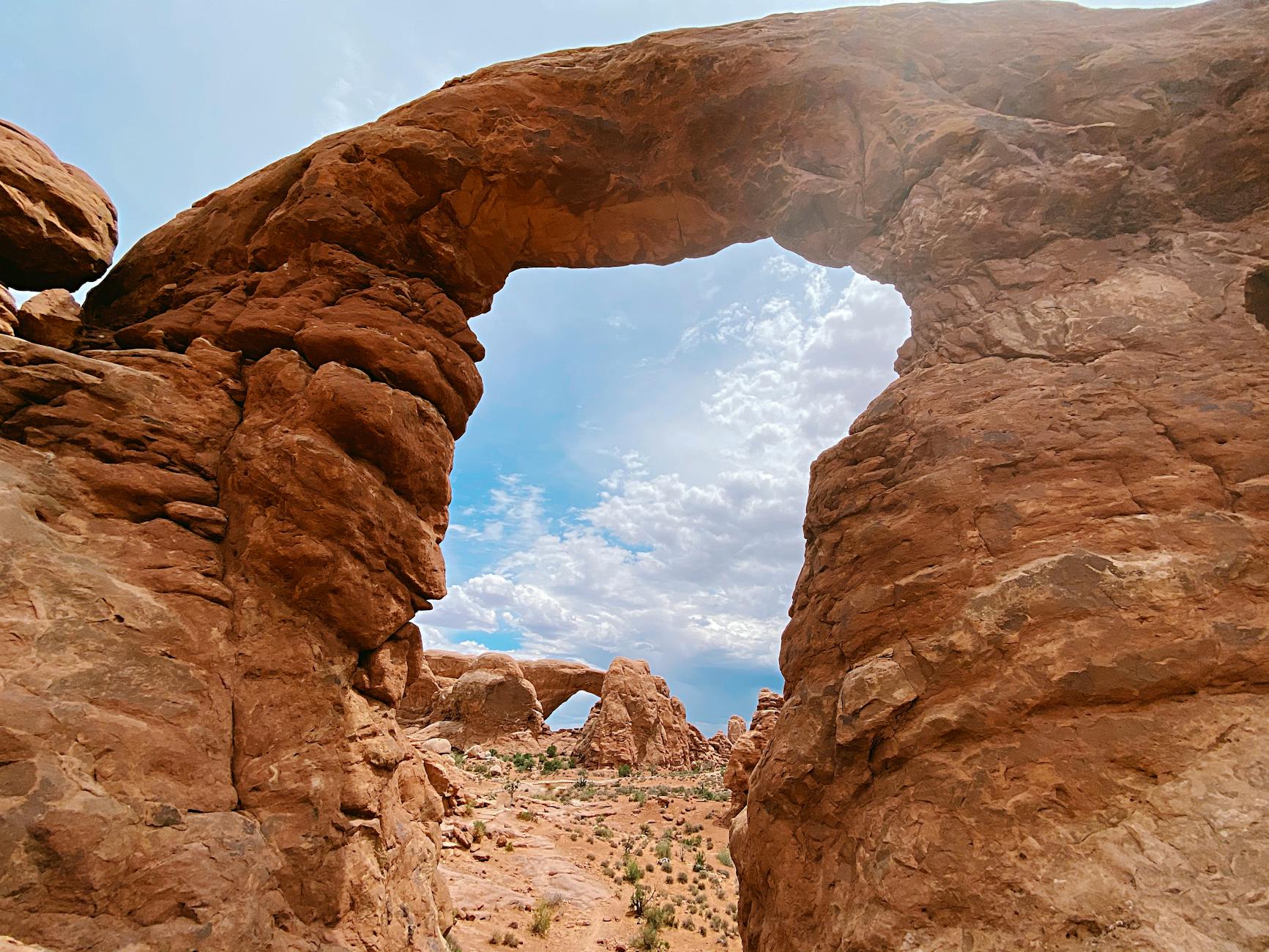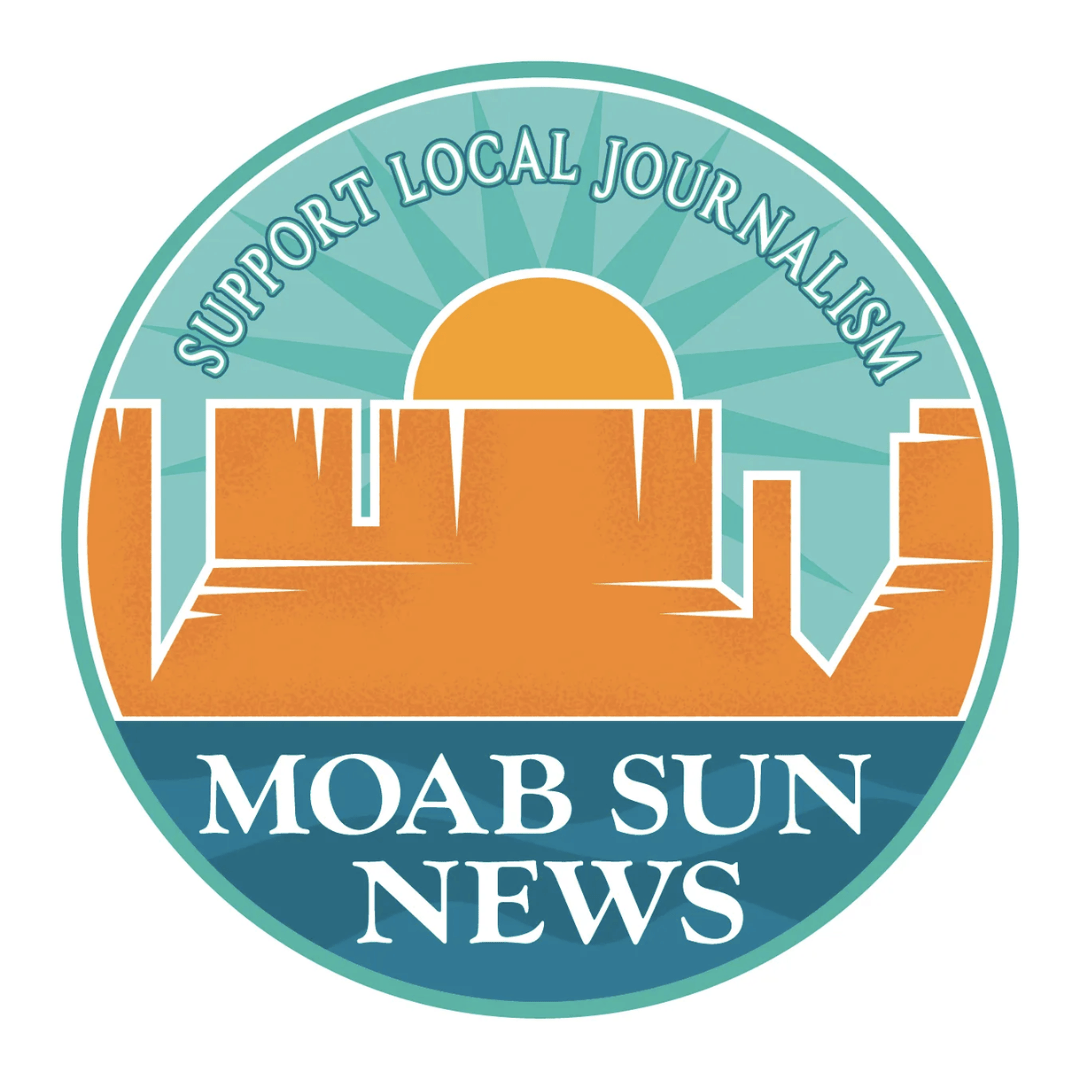In this time of social distancing due to the worldwide COVID-19 pandemic, the Moab City Council is using a new format for public meetings.
On March 24, the council held a virtual meeting using the tele-conferencing software Zoom and discussed the city’s budget and the much-debated downtown parking garage and state-allocated “Recreation Hotspot Funding.”
Livestreaming and new procedure for Citizen Comments
In a special meeting on March 20, the Council had approved amendments to existing policies that allow the council to meet entirely electronically. The meetings can still be viewed livestreamed on the city’s Youtube channel, and citizens’ comments are accepted via an online “Citizens to be Heard” form that can be found on the city’s website.
Citizens’ written comments are limited to 400 words, which is comparable to the 3 minutes allowed at in-person meetings. Comments sent by 4 p.m. the day of the meeting will be forwarded to councilmembers; all citizen comments will be included in the recorded minutes of the meeting, which is publicly available once complete.
Comments will be accepted electronically right up until the start of the regular meetings, which begin at 7 p.m. on the second and fourth Tuesday of each month.
Councilmember updates
Councilmembers shared their thoughts and concerns about the COVID-19 pandemic and the current health department restrictions during their councilmember reports, even bringing a sense of humor to the situation.
“When you’re stuck working from home, you find really interesting things,” said councilmember Tawny Knuteson-Boyd, lifting a weathered book up to her laptop camera so other councilmembers could see.
“This is my grandfather’s ‘Home Handyman’ repair book from 1948,” she said, sharing advice from the book that homeowners learn to fix their own electric cords—it could be done at home for 25 cents, but would cost as much as $2 to have it done by a professional.
“And if you really want misinformation, this is my grandmother’s 1934 ‘Sex Education’ book,” said Knuteson-Boyd, lifting another time-worn volume to the camera.
“It is hysterical. If you ever want to borrow it, I’m willing to lend it out,” she offered.
On a more serious note, councilmembers discussed where the public can find resources regarding the shut-down, the outbreak of the coronavirus, and assistance programs, listing the city website and coronavirus.utah.gov as useful sources for local and state updates.
Mayor Emily Niehaus shared messages from Orion Rogers, leader of the local COVID-19 Task Force, and Jen Sadoff, CEO of Moab Regional Hospital. Both messages expressed gratitude that the majority of the public is complying with health department measures, and those measures are accomplishing the goal of reducing contact between people and reducing the number of people in Moab with the hope of slowing the spread of the virus.
Niehaus shared another specific message from the hospital, delivered in her own words: “It is absolutely okay for people to get out and recreate and have fun and breathe fresh air. The only thing the hospital is asking is, maybe check your epic at the door. This is not the time to do really intense recreation. This is a time to be responsible with your recreation.”
She also shared a clear message from Rogers regarding restaurants and retailers that are not encompassed in the March 16 closure order: “Take out and to-go of restaurants is still allowable, as is retail,” she assured businesses.
City budget
City Finance Director Rachel Stenta gave the council an update on city budget projections. Much of the city’s revenue comes from Utah’s Transient Room Tax and sales taxes, which will be greatly reduced now that Moab is closed to tourists and hotels are operating at a very reduced capacity.
Stenta presented graphs displaying tax data from recent years. She noted that there is a 60-day lag in tax collections, so taxes paid by tourists, shoppers and lodgers in March would show up in the city’s account in May.
“March and April are big months for TRT [transient room tax] collections,” Stenta said.
According to records, in 2018 the city collected $334,446 in TRT money in May, and $375,649 in June. In total sales taxes, including transient room tax, in 2018 the city collected $825,457 in May and $864,173 in June.
It’s uncertain how much the current health department restrictions will impact the city budget, but there’s no question that the city will collect significantly less than they had been projecting before the pandemic.
The city has had a hiring freeze in place since January of this year, and last week implemented a freeze on all non-essential spending. Stenta said her department predicts that the hiring freeze will save $190,000 this year. The spending freeze savings will be less significant.
“The largest percentage of our budget is made up of personnel costs,” she said. She advised the council to regularly reevaluate next year’s budget.
Downtown parking structure
Before the threat of COVID-19 became immediate and present, an issue of great concern in Moab was the proposed Downtown Parking Structure, funded by money allocated through the Utah Transportation Commission under the “Recreation Hotspot” program.
Citizens and councilmembers have raised doubts about whether the project is the best way to achieve the goals outlined in the hotspot funding criteria: reducing congestion, facilitating tourism, and boosting the economy.
Before the health department issued their March 16 restrictive order, councilmembers had been hashing out a resolution to pause the project and reconsider other possible uses for the money. An understanding had been reached with UDOT that the community would have six months to devise and propose an alternative project.
In a separate meeting, councilmembers Kalen Jones and Karen Guzman-Newton compared competing resolutions proposing a pause in work on the parking structure and crafted a new document on which they could agree.
The resolution calls for the renegotiation of the UDOT agreement regarding the parking structure and a termination of the design contract with Kimley-Horn, who the city had contracted for the design phase of the structure. It also calls for coordination with UDOT and Grand County in pursuing possible alternative projects.
“I’m much more comfortable with this than I was the last time,” said Knuteson-Boyd of the revised resolution. “I appreciate all the work that went into it, I know it was hard.”
Niehaus added that the city may want to request that the six months granted by UDOT be extended in light of the COVID-19 crisis.
The resolution passed unanimously.
The end of the tunnel
City procedures have been upended by the coronavirus pandemic, as have the daily lives of many people. Niehaus looked forward to the end of the crisis with hope.
“When this ends, we’re closing down Center Street in front of City Hall and we’re having a barbecue, and we’re going to celebrate that it’s over,” Niehaus proclaimed. “And then we’re going to get back to business and we’re going to put up welcome signs and we’re going to welcome people to come back to Moab and recreate.”
In this time of crisis, the Moab Sun News needs your support. Become a member today and receive a digital edition emailed directly to you each week. Every dollar supports our work. Show your support for independent community journalism and sign up for our e-editions today.
The Moab City Council meets on the second and fourth Tuesday of each month at 7 p.m. Meetings are live-streamed online on the Moab City YouTube page.





